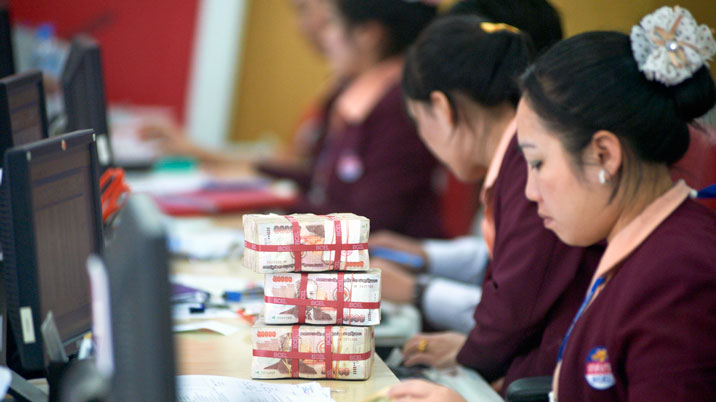KEY FINDINGS
Economic outlook
- Lao PDR’s economy is projected to grow at 8% in 2013. The major contributors to this are services, hydropower, construction, and food processing sectors.
- The East Asia and Pacific region is expected to experience solid growth in 2013. Lao PDR is expected to benefit from sustained demand from its key trading partners (particularly China, Thailand, and Vietnam), given their overall prospects in 2013.
- Lao PDR’s accession to the World Trade Organization in February 2013 was a step towards the establishment of a rules-based system of economic governance. It is an important part of efforts to promote the non-resource sectors.
- Headline inflation increased from 3.4% in November 2012 to 5.8% in March 2013, primarily due to higher food inflation resulting from higher prices of non-rice food items.
- The fiscal deficit is expected to rise notably in 2012/13 due to increased spending on public sector wage increases.
- Slower growth in revenues is expected as a result of lower mining revenues and grants. Given the recent outlook on the uncertainty of commodity prices and the continued expansionary policy, financing this wage policy will require an increased debate on fiscal sustainability.
Transparency in mining revenues
- Over the last decade, significant investments in mining have supported rapid growth in Lao PDR and the sector now directly contributes 8 to 11% of the GDP (and 15-20 percent of GDP when indirect spillovers are considered).
- Mining sector revenues now account for about 20% of total government domestic revenue, providing scope for increased public spending but also exposing the budget to greater volatility from commodity prices.
- Lao PDR is taking steps to improve transparency as part of efforts to introduce greater stability and predictability to the natural resources business environment.
- The reporting of mining revenues is still a major challenge.
- The Extractive Industries Transparency Initiative (EITI) is a successful initiative proven worldwide as a tool that can enhance transparency, stability and sector governance.
- Indonesia and the Philippines are both implementing the EITI , while Myanmar and Vietnam are considering it.
Public spending on health
- Although economic performance has been robust, the maternal mortality rate for Lao PDR is still much higher than expected for its income level. It is double that of Cambodia and almost eight times higher than that of Vietnam.
- Since government spending on health is very low (1.1 percent of GDP), out-of-pocket (OOP) payments – estimated at 46% of total health spending – is high. This affects the amount of people availing health services and constrains improvements in health outcomes.
- High OOP payments also contribute to inequality and financial risk for households.
- The planned Universal Health Coverage and free maternal and child health policies are a welcome step. However, these need to be complemented by improvements in health facility capacity to manage revenue and service readiness.
- Improving government health spending effectiveness is likely to be the most viable strategy for improving access to health care services and enhancing financial protection.
- It also complements the government’s commitment to increase government health expenditure to 9% of the government budget.
Improving sanitation
- The lack of access to improved sanitation in Lao PDR is another challenge for the health sector. The overall economic costs of poor sanitation are estimated to be US$193 million per year.
- Three out of ten people still practiced open defecation in 2010.
Sanitation conditions were worse in rural areas, where about 41% of people practiced open defecation and 8% of the population used bad sanitation facilities.
- All sanitation initiatives in Lao PDR have benefits that exceed costs, contributing to improved health, clean environment, dignity and quality of life.
- Economic returns from investing in sanitation are potentially high - in excess of US$2 return per dollar invested in urban areas and at least US$4 return per dollar invested in rural areas.
